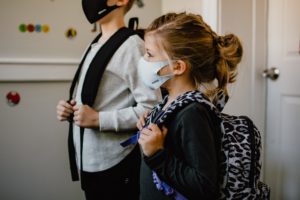 One of the biggest challenges we’ve seen in the last year of COVID-based lockdowns has been with kids and virtual classrooms.
One of the biggest challenges we’ve seen in the last year of COVID-based lockdowns has been with kids and virtual classrooms.
Dual income parents who were furloughed or working from home suddenly had to take on roles they weren’t really prepared for – namely, teaching or helping kids with both sketchy online learning technology, poor connectivity, and trying to dredge up things like sixth-grade math and English grammar rules.
Now that vaccinations are climbing and the long-term threat of a pandemic is slowly easing off, many parents are wondering what the future holds for in-person instruction for their kids. All manner of opinions exists on this, from the lack of socialization and its effect on young, developing brains to the obvious need to protect older teachers and school administrators from infection.
New research from an Ohio study of in-student school systems last fall now suggests that masked students who were exposed to a COVID-positive student – even at less than six feet were no more likely to come down with COVID. One thing for certain, a lot of parents are worried about what will happen for one reason, and a lot of school officials and teachers are worried about the overall safety of in-person instruction for a completely different reason.
It’s going to be a challenge, either way, and schools that were already pressed for space trying to arrange classrooms to facilitate the six-foot social distance in seating arrangements are sure to be looking for guidance from the CDC as well as vaccine producers and research.
The problem, of course, is that as more and more Americans are getting back to work, they’re being forced to choose a job over their family. Is it safe to send kids back into the classroom? Is it safe to leave them home for virtual schools?
These are questions that state and local governments are going to have to answer – and businesses large and small will be accountable for – in the very near future. Ultimately, it’s going to be frustrating for a lot of people, and no matter what decisions are made, some people and children are going to fall between the cracks.
The best advice? Pay close attention to what your local school system is planning, become active in any meetings – the PTA, for example, and don’t be scared to tune in to Zoom meetings of your local Board of Education. In the end, it’s likely that Uncle Sam is going to have to step in and fund some things – be it an overhaul or underwriting of a myriad of network communications companies to ensure “last mile” connectivity, some universal expectations of virtual classrooms, or some such. The downside is that if the Federal government gets involved, untangling the mess could take years and literally not positively impact the very generation of schoolchildren that are at the heart of these challenges.
One other key thing you can do can literally be done right now: ensure your employer is aware of your situation. Even if your boss “knows” you have kids in school, arrange a meeting with them to discuss the challenges you are having now with “virtual” school and any worries you have for the future.
That can go a long way towards setting you and your kids up for success if and when the option for in-person classes is available in your hometown.




